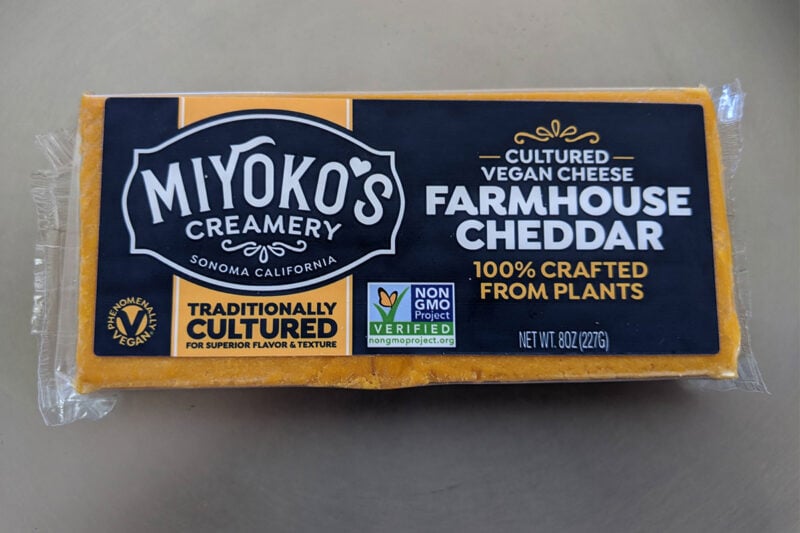If you want to become effective at protecting animals, a crucial first step is to learn the difference between animal rights and animal welfare. These are vital but philosophically opposite approaches to animal protection. Many activists don’t understand either concept clearly. An inability to invoke these concepts in discussions will diminish your capacity to advocate for animals.
The term “animal rights” resists unambiguous definition since there are a number of divergent approaches to the topic, and much of the rhetoric commonly associated with animal rights actually has nothing to do with rights at all. On top of that, the term invites tricky questions regarding which animals have rights, and which particular rights they may have. Generally speaking, though, animal rights consists of a variety of arguments that draw the line against using animals for food, cosmetics testing, fur, circuses, and so forth.
Before we explore the central ideas involving animal rights, let’s look at animal welfare, which is a vastly simpler concept and predates animal rights philosophy by centuries.
Why Animal Welfare Gets a Bum Rap
Animal welfare was a key principle guiding the humane movement of the 1800s; the RSPCA (Royal Society for the Prevention of Cruelty to Animals) was founded in 1824 and brought these welfare principles into mainstream Western culture. The core assertion guiding the humane movement was that it’s okay to use animals for food, entertainment, transportation, medical research, whatever—but if animals are to be used for purposes like these, they shouldn’t be subjected to cruelty or avoidable harm. Humane organizations also sought outright bans on the most despicable uses of animals, such as fox hunting and animal fights—but it was the reduction of harm rather than the abolition of exploitation that guided the work of these groups.
A significant number of animal advocates today vehemently object to anything that smacks of welfarism, believing that this rhetoric legitimizes using animals in indefensible ways. But condemning welfare-based thinking is remarkably short-sighted. However much you and I may wish to live in a world where people refuse to exploit animals, the reality is that there is currently a lot of money to be made by using animals for food and other purposes. We can’t expect people whose income is based on animal use to carefully contemplate the nuances of animal rights. As Upton Sinclair memorably observed, “It is difficult to get a man to understand something, when his salary depends upon his not understanding it!”
So the great virtue of animal welfare rhetoric is that it requires nothing in the way of nuanced or protracted thinking. What’s more, its demand to eliminate cruelty whenever possible is sensible enough to render a good-faith rebuttal impossible. It’s therefore easy to get most animal-exploiting businesses to at least halfheartedly accept a welfare perspective. Animal welfare can thereby motivate companies to reduce the number of animals they use while eliminating sources of needless suffering.
Why a Welfare Approach Benefits Animals
Regardless of whether we are talking about a farm, a zoo, or a laboratory, providing truly good animal welfare requires a shocking level of added expense. So whenever animal exploiters are persuaded to take animal welfare seriously, production costs often rise, the total number of animals raised declines, and the cruelest handling methods are reevaluated and often banned.
Let’s examine how this dynamic plays out in regard to eggs. In the United States, cage-free eggs typically cost about 50 percent more than eggs from caged hens. And while nobody can legitimately doubt that cage-free hens suffer far less than their battery-cage counterparts, there remains ample room for welfare improvement at most cage-free farms. The vast majority of cage-free hens are kept in crowded conditions, and the vast majority are never allowed to venture outdoors.
Can cage-free hens be raised with truly excellent animal welfare? Absolutely. But the added costs are so substantial that it rarely happens. I’ve visited a couple of egg farms that make minimal compromises where welfare is concerned. The hens enjoy abundant outdoor access and all-around excellent living conditions. But this level of animal welfare doesn’t come cheap. The farmers typically sell these eggs for about quadruple the price of factory farmed eggs, and even at this price they barely scrape by financially. What’s more, even here, serious welfare problems can still remain unaddressed.
Nearly all cage-free farms purchase the very same high-yielding hen varieties used by factory farms. These hens are predisposed to health problems that do not afflict less-productive heirloom breeds. Additionally, the male counterpart of each cage-free layer hen was very likely ground up alive at the hatchery (he is certainly nowhere to be found at the farm). And every single commercially-raised cage-free hen is destined for slaughter before middle age, as her egg yields decline.
Just as cage-free eggs produced under varying welfare standards are widely available, you can likewise find beef, pork, chicken, and milk that don’t come from factory farms. But, as we witnessed with layer hens, a careful look at enhanced welfare meat and milk generally reveals great room for improvement as well as certain troubling practices that money cannot remedy.
The Counterproductive Backlash Against Animal Welfare
Since no system of raising animals for food is perfect, some animal rights advocates sarcastically refer to higher welfare animal foods as “happy meat,” and assert that they offer no meaningful reduction of cruelty over the worst factory farmed foods. This is a misguided position, as it’s both patently false, while potentially crippling to an entire arm of the animal protection movement.
Animal advocates would therefore do well to understand that as long as people insist on eating meat, we should always communicate that there is an ethical obligation to ensure that the animals involved won’t suffer needless cruelty. After making this point, it’s then easy to demonstrate that the overwhelming majority of meat produced by higher-welfare operations still comes from animals who suffer in numerous ways, even if they are subject to less cruelty than they would face at a conventional factory farm.
Truly good animal welfare is not only extraordinarily expensive, it’s difficult to verify. Higher welfare farms may therefore have an irresistible temptation to reduce expenses by reneging on the welfare standards they’ve promised. Chipotle Mexican Grill learned this the hard way in January of 2015, when it had to stop offering pork at hundreds of its restaurants because one of its largest suppliers wasn’t adhering to the welfare standards it was under contract to provide. And in 2022, Coca-Cola agreed to pay out $21 million after repeatedly breaking the animal welfare promises associated with its Fairlife milk brand.
So while it’s certainly possible to eat meat, milk, and eggs from animals who have received decent levels of care, it’s much more inconvenient and expensive than you might think. That said, to whatever extent we can convince die-hard omnivores to embrace alternative producers, we can reduce both cruelty and the total amount of non-vegan food consumed.
Moving from Animal Welfare to Animal Rights
Advocating for animal welfare—or, at the barest of minimums, not criticizing animal welfare improvements—is of course only the starting point, not the end point, of effective animal advocacy. If we are to have any hope of ending the exploitation of tens of billions of farm animals each year, animal rights (not just animal welfare) must enter into the discussion. Effectively advocating for animal rights requires some careful thinking and a solid philosophical basis.
The foundation for rigorous thinking about animal use was laid in 1975, with the publication of Peter Singer’s book Animal Liberation. While today Singer is commonly regarded as the father of the animal rights movement, ironically Animal Liberation did not make a concerted attempt to argue that animals in fact have rights. Instead, the book took a philosophical framework called utilitarianism, first devised by Jeremy Bentham (1748-1832), and extended it to the world of human interactions with animals.
Applying Utilitarian Thinking to Animal Use
Utilitarianism’s guiding belief is remarkably simple: moral behavior seeks to maximize joy and minimize suffering. Presciently, Bentham did not exclude animals from utilitarianism even if in his best-known work he relegated the question of animals to a single footnote:
The question is not, Can they reason? nor, Can they talk? but, Can they suffer?
To be clear, Bentham did not offer a philosophical basis for assigning rights—either to people or to animals. He merely created a framework for a standard of moral behavior that seeks to maximize happiness and minimize harm.
Peter Singer extended Bentham’s utilitarian approach to evaluate how animals might ethically be used by humans. Singer began by conceding that there are certain undeniable pleasures associated with animal exploitation—take, as one example, the savory flavor of meat enjoyed by millions. But to declare meat-eating as ethically acceptable, we must weigh the sensual enjoyments it provides against whatever miseries the animals suffer. Singer convincingly demonstrated in Animal Liberation that whenever humans make use of animals, the pleasures enjoyed by humans are likely minuscule compared to the sufferings inflicted upon animals.
Utilitarianism opens the door to a thoughtful dialog about how humans can ethically make use of animals. But utilitarian thinking is also hindered by some obvious limitations. Reducing everything to a calculation of potential joy vs. suffering ignores other relevant concerns. Specifically, utilitarianism tends to disregards the intrinsic value of the animal’s life.
In consequence, utilitarian philosophers may offer no objection to the slaughter of an animal, as long as that animal lived a decent life and was killed instantly and without any suffering. From this perspective, humans have gained the benefit of the animal’s flesh and hide, but there’s no suffering against which these benefits must be weighed.
Fortunately, Singer didn’t put all his eggs in the utilitarian basket. Animal Liberation popularized a second concept—called speciesism—that opened the door to considering animal rights.
Speciesism
Speciesism is an easily-understood label that offers a powerful avenue of discussion for animal advocates. Speciesism is cut from the same cloth as racism and sexism. It arises anytime a being’s rights are evaluated based on her species, rather than on her innate capacities to think, feel, or suffer. So somebody concerned with speciesism might ask why it might be considered acceptable to test cosmetics on rats, but not on cute furry bunnies. Or he might wonder why it’s considered okay to kill pigs and cows for food, but not dogs and horses. In examples like these, it’s apparent that these animals are comparably sentient, and possess similar capacities for pain and pleasure.
Speciesism can also serve as the basis for coherent reasoning concerning the divide between people and other animals. If it’s not okay to lock a person in a tiny cage, what makes it acceptable to do the same to a pig or hen? In all cases, it’s clear that the being in question is capable of suffering enormously.
It’s likely that most of the animal cruelty and slaughter that exists today fundamentally arises from speciesist beliefs. So including speciesism in discussions related to animal exploitation is a powerful way to start people thinking about difficult and important questions.
That said, it’s possible that some speciesistic beliefs may protect animals, even if these beliefs cannot be logically defended. I tend to think that any time a group of animals gains protection it’s a good thing for all animals, even if the motivation arises from flawed reasoning.
For instance, you might make an argument with speciesistic overtones that results in saving some cute, fuzzy lambs. Once people are won over to saving fuzzy lambs, perhaps tomorrow they will be more receptive to extending their concern to less adorable animals. But I’m just another activist with an opinion. I’m not confident that I’m right and I have no data to back me up on this point.
Tom Regan and the Subject of a Life
Almost a decade after the publication of Singer’s Animal Liberation, another philosopher, Tom Regan (1938-2017), stepped into the scene with his 1983 book, The Case for Animal Rights. Regan’s book offered an analysis of animal rights that bypassed utilitarian thinking in favor of focusing on animal consciousness itself. The Case for Animal Rights is hard-core academic philosophy, and is likely too challenging for the mainstream reader. So in 2003 Regan revisited the topic with a book titled Empty Cages
, which is far more accessible and offers a superb introduction to his non-utilitarian approach to animal advocacy.
To Regan, gauging the degree that animals suffer and humans benefit is a distraction. He was instead interested in whether the animals under consideration possess sufficient awareness to be the “subject of a life.” If some animals indeed possess this level of sentience, then taking their lives, or depriving them of life in a natural setting, is a violation of their rights regardless of any benefits derived by humans.
Legal Personhood
The concepts advanced in Singer’s and Regan’s writings helped open the door to “legal personhood.”
The concept of personhood shows great promise when it comes to winning new legal protections for animals. Here, “person” is not synonymous with “human,” but instead indicates that an entity—living or not—is important within the legal system. The Nonhuman Rights Project has embraced this approach to argue that being autonomous and self-determining is a sufficient condition for legal personhood, at least for the purpose of gaining freedom through a writ of habeas corpus.
Legal personhood is especially applicable to primates. Most laypeople probably already agree that primates reside in a special category where animal rights are concerned. Primates are so obviously endowed with human-like levels of sentience that they deserve strong and clear legal protections. Years of litigation on this front suddenly paid off in April of 2015, when a New York court recognized two chimpanzees could be considered “legal persons” and ordered a university to come into court and justify keeping keep them captive for the sake of medical experiments.
Future court cases will probably extend legal personhood to include a wide diversity of species. From crows who can understand analogies to the remarkable ability of dolphins to display empathy, it seems that the more you learn about animals the more species may fall under the umbrella of being entitled to legal personhood. In fact, an entire book—Drawing the Line, by the attorney Steven M. Wise—is devoted to exploring legal personhood and evaluating which animals merit protection within this sphere.
The thought leaders within the animal rights movement have historically been philosophers. But it was lawyers who were responsible for developing the core thinking related to animal personhood. And personhood may well be the most legally potent concept to arise within the animal protection movement. As Steven Wise has said, “If you want to improve the philosophical status of animals you are best off talking to philosophers, but if you want to advance the legal status of animals then you should talk to lawyers.”
Why Animal Rights & Animal Welfare are Both Crucial to Animal Protection
Philosophy is tedious and challenging, and only the tiniest portion of people ever wades deeply into it. But even a rudimentary understanding of the core animal rights and animal welfare concepts can greatly increase your advocacy abilities. A familiarity with animal rights and welfare can guide you to the most effective forms of activism, while also enabling you to choose the most persuasive talking points.
People have a wide range of beliefs about the moral status of animals. You’re therefore more likely to find agreement with a greater cross-section of people by making arguments based on both rights and welfare rhetoric. The primary concepts underlying animal rights and welfare are simple and straightforward. For instance, any conversation pertaining to animal exploitation can touch on issues like:
- Welfare considerations: “Might it be easier to avoid animal products altogether than it is to pay the extreme amount of money and attention needed to guarantee excellent levels of housing and care?”
- Utilitarian-based considerations: “Is it okay to raise and slaughter an animal, often under the harshest conditions imaginable, simply because we enjoy the taste of flesh?”
- Speciesism: “If it’s not acceptable to kill and eat your dog, how then can we justify the slaughter of pigs for bacon?”
- Rights based on legal personhood and subject-of-a-life: “Do we have any right to confine or kill an animal who is aware she exists, and who plainly wants her life to continue?”
You can mix and match the above talking points, based on how receptive the listener is to each topic. Keep in mind that people who ridicule rights arguments are nevertheless commonly receptive to welfare arguments. And welfare arguments are highly effective at inspiring people to reduce their consumption of animal products, while shifting purchases to more ethical producers.
It’s Not Just What You Say, It’s How You Say It
The choice and quality of your arguments is often of secondary importance to your style of communication. Are you friendly and engaging, or do you allow the conversation to degenerate into a quarrel? Effective advocacy is more about winning people over than defeating people in an argument. You want to encourage people to try more vegan foods at every turn. Through extended communication, you can demonstrate that making compassionate food and lifestyle choices is easy and satisfying.
Nothing aids in these efforts more than communicating in a way that is friendly, non-judgmental, and well-informed. And of course, one of the most effective routes to animal protection has nothing to do with philosophy at all, but rather involves showing people the remarkable variety of delicious foods that are available on a vegan diet.
A grasp of the concepts presented in this essay can aid your animal protection efforts in numerous ways. But a little animal rights philosophy goes a long way, and when it comes to actually winning rights for animals there are diminishing returns to studying this topic. Once you’re acquainted with the core concepts supporting animal rights and welfare, it’s wise to shift your attention to studying the strategies and tactics that have delivered the greatest gains for animals.
The best animal advocates are always on the lookout for low-hanging fruit—comparatively easy wins that will result in the protection of large numbers of animals.
Recommended Reading
If you want to apply the concepts discussed in this essay to animal protection, check out my Animal Rights Activism Guide. It introduces a number of concepts proven to deliver impressive results when it comes to keeping animals from harm. These books are also worth your time:
- Striking at the Roots, by Mark Hawthorne
- Ethics Into Action, by Peter Singer
- Change of Heart, by Nick Cooney
- Uncaged, by Ben Davidow
You can find corners of the Internet where people vehemently argue over different approaches to animal rights rhetoric and activism. But getting all animal advocates to agree on the single best way forward isn’t important and may not even be desirable. What matters is whether we are collectively accomplishing as much for animals as possible. Perhaps the best philosophy, then, is the one that’s capable of sparing the most animals from suffering and from slaughter. Looked at this way, gaining a familiarity with animal welfare and rights philosophies becomes the jumping-off point to where the real work begins.
***
My great thanks to Peter Singer, Paul Shapiro, and Steven Wise for reading and commenting on drafts of this essay. Any mistakes or misinterpretations here are mine alone.














